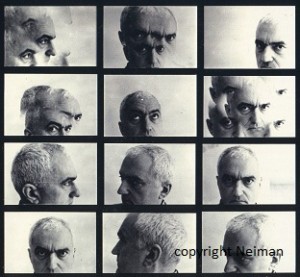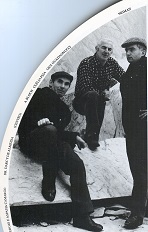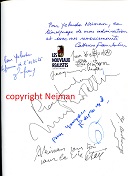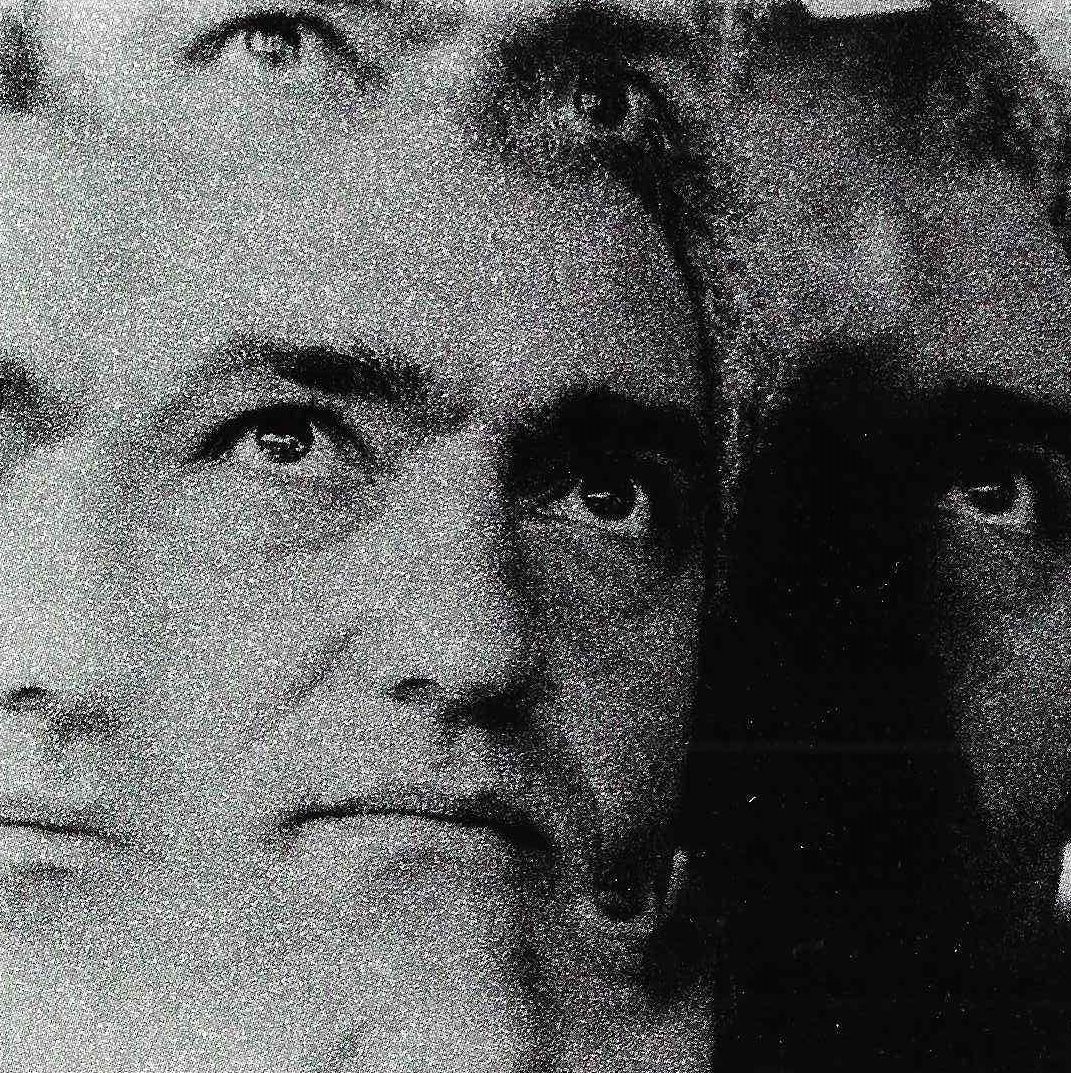
Enfance
Fils d’Ezekiel Moshe Neiman (1893-1956), journaliste, humoriste, dramaturge polonais* et de Dora Alter (1912-1996). Yehuda est né le 22 octobre 1931.
Il a presque 8 ans lorsque, avec sa mère, le 1er septembre 1939, ils fuient Varsovie, à l’aide d’un ami et partent retrouver E.M.N. Ils obtiennent l’autorisation d’émigrer en Palestine alors territoire sous mandat britannique. Un long périple les conduit, via l’URSS, les Balkans, Londres, en 1940 en Palestine. Ils trouvent des foyers juifs autour de Jaffa et de Jérusalem de personnes arrivées entre 1904 et 1914 (après notamment l’échec de la première révolution russe), soit d’autres qui ont fui l’Europe autour de 1920. Dans sa famille, on parle le yiddish, le polonais, l’anglais, l’allemand et on se met à l’hébreu.
En 1946, sa mère divorce et épouse Mochechaï Cukierman dit Tsanin (1906-2009), qui devient le directeur du premier quotidien yiddish, Letzte Nyess, en Israël. De cette union, naîtra un enfant en 1948.
Yehuda passe plusieurs années (1947-1949 ?) dans le kibboutz Nachshon, où il participe dans l’esprit laïc à l’exploitation agricole, à la construction, à l’entretien des machines.

Vie d’artiste
À partir de 1949, il s’installe dans un atelier à Tel-Aviv, et il étudie avec Yehezkel Streichman (1906-1993) et aussi avec Avigdor Stematsky (1908-1989). Il rencontre Sioma Baram (1919-1980), Emmanuel Mané-Katz (1894-1962), Lea Nikel (1918-2005), Ofer Lellouche, et retrouvera la plupart en Europe et notamment à Paris, à Londres ou aux Baleares.
Il est très lié et le sera tout au long de sa vie à des artistes qu’il rencontre dès cet époque en Israël ou, un peu après, ailleurs, comme David Lan-Bar (1912-1987), Menashe Kadishman (1932-2015), Frank Krajcberg, le sculpteur Yitzhak Danziger (1916-1977), des artistes polyexpressifs comme Arik Brauer (1927-) et Amos Kenan (1927-2009) son grand ami.
Vers 1953, il repart vers l’Europe, passe un moment à Londres, puis vient à Paris en 1954 où il est admis à l’école des Arts Décoratifs (section décor de théâtre).
En 1954, le jour de son arrivée à Paris, il fait la connaissance d’Yves Klein au Select, et fera aux cours des mois et des années suivantes de nombreuses autres rencontres et nouera des amitiés, parmi lesquelles : Agam, Arman, Barzilay, Myriam Bat-Yosef, César, Christo, Dufrêne, Enu, Erro, Fautrier, Gigi, Hains, Klapech, Lindström, Maryan, Marfaing, Mercado, George Noël, Raynaud, Raysse, Niki de Saint-Phalle, Spoerri, Tal Coat, Tinguely, Villeglé… Yehuda vient voir ses amis, par exemple, en avril 1955, à la Galerie Denise René « Le Mouvement », il est aussi à la première exposition personnelle de Klein au Club des Solitaires (cf. archives). Neiman travaille et vit parmi les artistes dans le quartier de Montparnasse – plusieurs adresses pour ces ateliers entre 54 et 61: impasse Ronsin et 8 rue Campagne Première (Paris 14e) – et il passe ses soirées au Select, à la Coupole ou au Rosebud avec artistes, critiques d’art, amateurs d’art, collectionneurs : Boudaille, Restany, Cabanne, Halten, par exemple.
Dans une interview pour son exposition à la Galerie Donguy, 57 rue de la Roquette, Paris 11e, en 1982, Neiman raconte ses années de jeunesse : « on passait nos soirées à la Coupole, il y avait Charles Estienne, Pierre Restany, Bryen, Hains, Claude Rivière quelquefois. Yves [Klein] bien sûr, et on finissait au Falstaff à 4/5 heures du matin, après la fermeture de la coupole, cela pendant des années. Après j’ai connu Arman, tout le groupe. J’habitais impasse Ronsin, en face de Tinguely. »
 Proche des artistes du Nouveau Réalisme dès avant la composition du mouvement, il le restera aussi tout au long de sa vie. Les archives photographiques de Yehuda Neiman renferment de nombreux clichés de ces artistes : encore jeunes et peu connus, puis qu’il ne perdra pas de vue dans leurs carrières respectives et dont il tirera à sa façon, selon ses procédés, des portraits sur toile ou sur plaque d’aluminium sensibilisées.
Proche des artistes du Nouveau Réalisme dès avant la composition du mouvement, il le restera aussi tout au long de sa vie. Les archives photographiques de Yehuda Neiman renferment de nombreux clichés de ces artistes : encore jeunes et peu connus, puis qu’il ne perdra pas de vue dans leurs carrières respectives et dont il tirera à sa façon, selon ses procédés, des portraits sur toile ou sur plaque d’aluminium sensibilisées.
En 1961, il s’installe dans un nouvel atelier, 86 rue Bobillot (Paris 13e) beaucoup plus grand dans lequel il peut poursuivre son activité et continuer de festoyer avec ses amis qui sont le soir souvent nombreux à s’y retrouver.

Il épouse Marie-Thérèse Landier en 1962 (Restany est l’un des témoins) avec laquelle il a deux enfants Emmanuel et Laure.
Il poursuit une carrière internationale, participe à des expositions à travers le monde, des symposium (voir les pages de ce site où les différents aspects de son œuvre sont exposés).
En 2001, il est contraint de quitter son atelier dans lequel œuvres, matériel en tout genre (correspondant aux différentes facettes de son œuvre de photographe, peintre, sculpteur, graveur, sérigraphiste, joaillier) et ses abondantes archives se sont accumulés.
Épilogue
Yehuda est mort le 4 juillet 2011 des suites d’un cancer. Il a aimé la vie jusqu’à la fin, il a encouragé et a soutenu les jeunes artistes autour de lui.
Il aimait la compagnie et l’ambiance des vernissages, il s’intéressait à tout ce qui était création humaine.
*see YEKHEZKL-MOYSHE NAYMAN (December 15, 1893-September 22, 1956) and Lexicon of the new Yiddish Literature ; Biographical Dictionary of Modern Yiddish Literature, NY, Congress for Jewish Culture, 1981.
****
Childhood
Son of Ezekiel Moshe Neiman (1893-1956), Polish journalist, humorist, playwright* and Dora Alter (1912-1996). Yehuda was born on October 22, 1931.
He was almost 8 years old when, with his mother, on September 1, 1939, they fled Warsaw with the help of a friend and left to find E.M.N. They obtained permission to emigrate to Palestine, which was then a territory under the British mandate. A long journey led them, via the USSR, the Balkans, London, to Palestine in 1940. They found Jewish homes around Jaffa and Jerusalem of people who had arrived between 1904 and 1914 (after the failure of the first Russian revolution), or others who had fled Europe around 1920. His family spoke Yiddish, Polish, English, German and began to learn Hebrew.
In 1946, his mother divorced him and married Mochechaï Cukierman, known as Tsanin (1906-2009), who became the director of the first Yiddish daily newspaper, Letzte Nyess, in Israel. From this union, a child was born in 1948.
Yehuda spent several years (1947-1949?) on Kibbutz Nachshon, where he participated in the secular spirit of farming, construction and maintenance of machinery.
Life as an artist
From 1949, he moved to a studio in Tel Aviv, and studied with Yehezkel Streichman (1906-1993) and also with Avigdor Stematsky (1908-1989). He met Sioma Baram (1919-1980), Emmanuel Mané-Katz (1894-1962), Lea Nikel (1918-2005), Ofer Lellouche, and met most of them in Europe, especially in Paris, London and the Balearic Islands.
He was very close and would remain so throughout his life to artists he met at that time in Israel or, a little later, elsewhere, such as David Lan-Bar (1912-1987), Menashe Kadishman (1932-2015), Frank Krajcberg, the sculptor Yitzhak Danziger (1916-1977), polyexpressive artists such as Arik Brauer (1927-) and Amos Kenan (1927-2009), his great friend.
Around 1953, he returned to Europe, spending a time in London, then came to Paris in 1954 where he was admitted to the School of Decorative Arts (theater set section).
In 1954, the day he arrived in Paris, he met Yves Klein at the Select, and over the following months and years he made many other encounters and friendships, including: Agam, Arman, Barzilay, Myriam Bat-Yosef, César, Christo, Dufrêne, Enu, Erro, Fautrier, Gigi, Hains, Klapech, Lindström, Maryan, Marfaing, Mercado, George Noël, Raynaud, Raysse, Niki de Saint-Phalle, Spoerri, Tal Coat, Tinguely, Villeglé. .. Yehuda comes to see his friends, for example, in April 1955, at the Denise René Gallery « Le Mouvement », he is also at Klein’s first personal exhibition at the Club des Solitaires (see archives). Neiman worked and lived among the artists in the Montparnasse district – several addresses for his studios between ’54 and ’61: impasse Ronsin and 8 rue Campagne Première (Paris 14th) – and he spent his evenings at the Select, the Coupole or the Rosebud with artists, art critics, art lovers, and collectors: Boudaille, Restany, Cabanne, Halten, for example.
In an interview for his exhibition at the Galerie Donguy, 57 rue de la Roquette, Paris 11e, in 1982, Neiman recounts his youthful years: « we spent our evenings at the Coupole, there was Charles Estienne, Pierre Restany, Bryen, Hains, Claude Rivière sometimes. Yves [Klein] of course, and we would end up at the Falstaff at 4 or 5 in the morning, after the Coupole had closed, and this went on for years. Then I met Arman, the whole group. I lived on impasse Ronsin, opposite Tinguely. »
Close to the artists of the New Realism since before the composition of the movement, he will also remain so throughout his life. Yehuda Neiman’s photographic archives contain numerous photographs of these artists: still young and little known, but whom he did not lose sight of in their respective careers and whose portraits he drew in his own way, according to his processes, on canvas or on sensitized aluminum plate.
In 1961, he moved to a new studio, 86 rue Bobillot (Paris 13e) much larger in which he can continue his activity and continue to feast with his friends who are often numerous in the evening to meet.
He married Marie-Thérèse Landier in 1962 (Restany was one of the witnesses) with whom he had two children Emmanuel and Laure.
He pursued an international career, participating in exhibitions around the world and in symposia (see the pages of this site where the different aspects of his work are presented).
In 2001, he was forced to leave his studio in which works, material of all kinds (corresponding to the different facets of his work as a photographer, painter, sculptor, engraver, silkscreen artist, jeweler) and his abundant archives had accumulated.
Epilogue
Yehuda died on July 4, 2011 from cancer. He loved life until the end, he encouraged and supported the young artists around him.
He loved the company and the atmosphere of the openings, he was interested in everything that was human creation.
*Lexicon of the new Yiddish Literature; Biographical Dictionary of Modern Yiddish Literature, NY, Congress for Jewish Culture, 1981.
